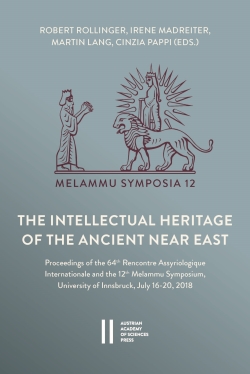
The Intellectual Heritage of the Ancient Near East, pp. 629-647, 2023/04/12
Proceedings of the 64th Rencontre Assyriologique Internationale and the 12th Melammu Symposium, University of Innsbruck, July 16‒20, 2018
Approximately 6,000 tablets were discovered in Nuzi and nearly 300 scribes produced this documentation. In order to tame this large corpus, I created a methodology for the prosopographical investigation of the scribes of Nuzi through the study of 12 scribes who worked for a woman, TULPUN-NAYA. Thanks to several criteria such as the contacts of the scribes (employers, witnesses, judges), the cities where they are active, their writing styles or even their seals and, in some cases their handwriting, it was possible to reach a more precise understanding of their professional practices. The scribes in question wrote only a small number of tablets for TULPUN-NAYA, 37 tablets, but they were employed by other persons and thus the corpus analysed comprises 460 tablets in total. The prosopographical study of these scribes highlighted the presence of many homonymous scribes. The creation of a database including the corpus of each scribe enabled comparison of the scribes and it was therefore possible to solve most of the cases of homonymy. Furthermore, by comparing the above criteria in the database, it was possible to bring to light the delivery of scribal instruction between scribes from the same family through several generations. Once the corpus of each scribe was defined, it was possible to identify the period during which they practised their professions. In the absence of any dating information, the presence of members of wealthy Nuzian families in the documents written by the scribes facilitated placement of the texts in a relative chronology. Overall, this paper both highlights the findings resulting from the analysis of the corpus of the scribes employed by TULPUNNAYA as well as the important challenges brought by homonymy and the lack of dating information.